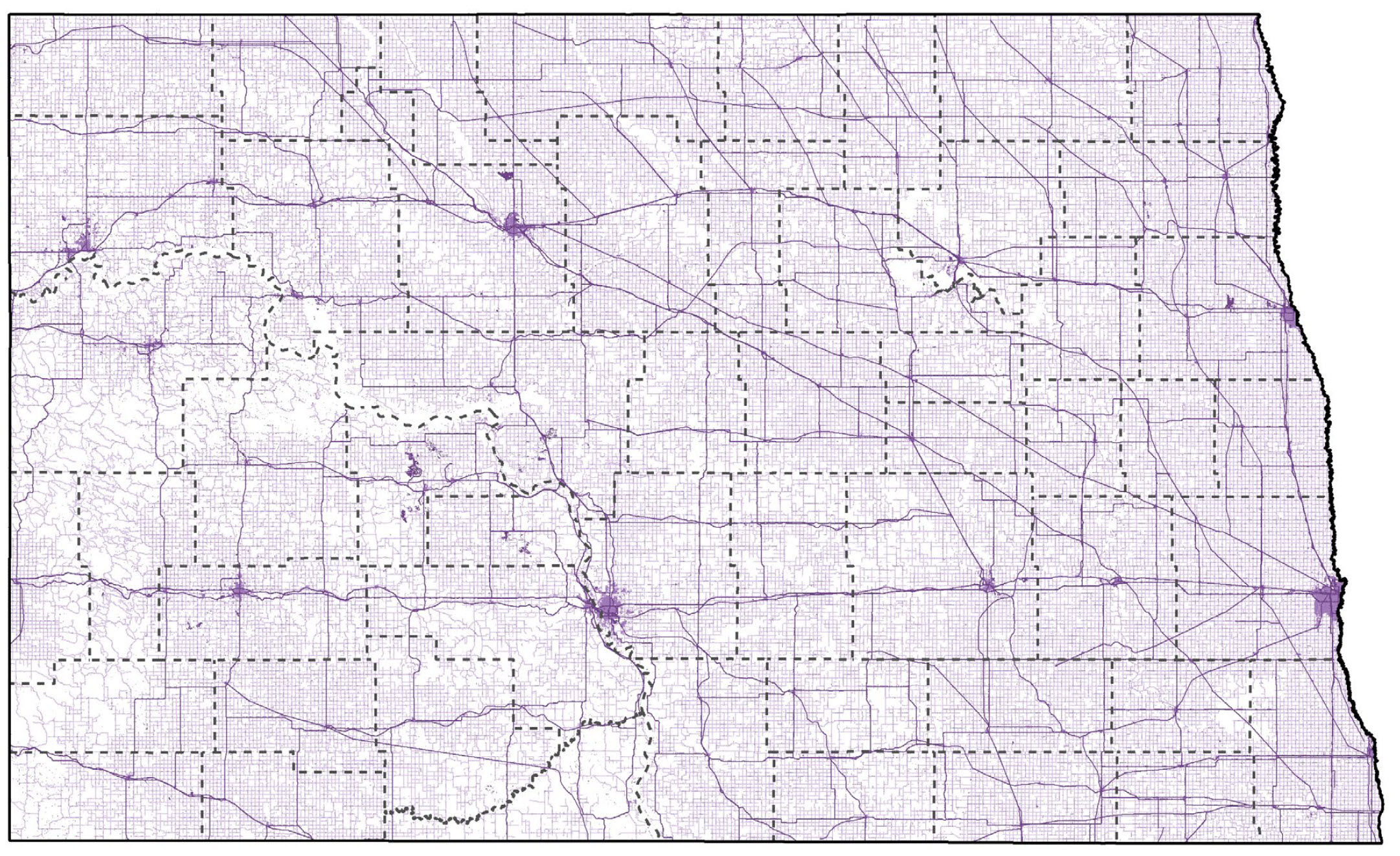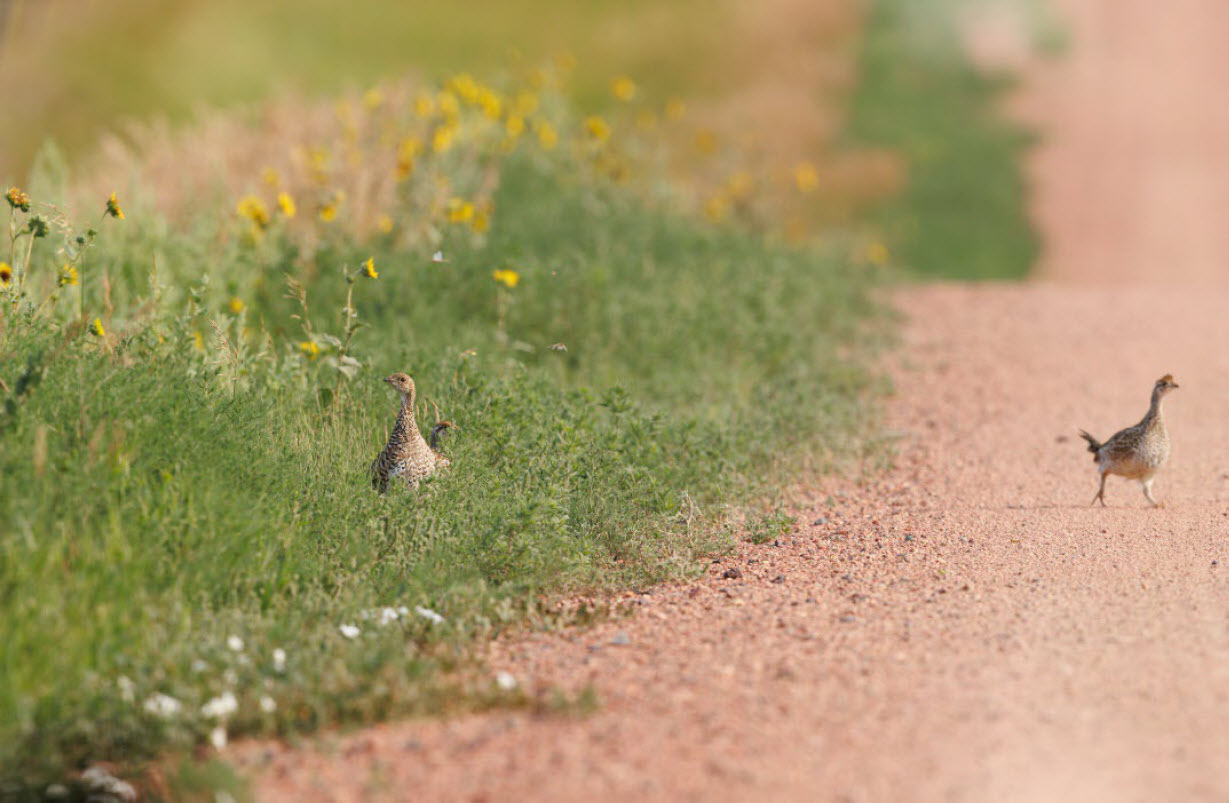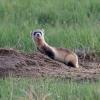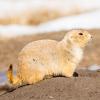Soil
Developed
Description and Key Features
Developed areas are dominated by constructed materials such as buildings and roads, residential areas, commercial or industrial centers, transportation and utility corridors, and may include intensively modified open areas such as golf courses and parks (Figure 27). While some vegetation may be present, these areas are typically dominated by man-made structures.
North Dakota’s population was estimated at 796,568 in 2024, with more than half living in urban areas.
There are about 107,000 miles of roads, including paved, gravel and unsurfaced roads.
While the actual road surfaces do not function as habitat, the adjacent ditches or roadsides can play a key role in providing habitat for some species, especially in areas where natural habitat is limited.
Developed land totals nearly 1.9 million acres and covers 4.2% of the state.
Developed Lands Map

Figure 27. Developed land (purple), including towns and cities, roads, railroads, industrial and energy facilities.
Developed Lands Images

Pollinator garden in developed urban area.

Upland game birds using roadsides.
Associated Species
Note: Species listed here include SWAP SGCN and game species.
| Species Image | Species | Taxon | Subtaxon or Group |
|---|---|---|---|

|
Burrowing Owl | Birds | Landbird |

|
Swift Fox | Mammals | Carnivore |

|
Black-footed Ferret | Mammals | Carnivore |

|
Richardson’s Ground Squirrel | Mammals | Rodent |

|
Black-tailed Prairie Dog | Mammals | Rodent |

|
American Toad | Amphibians | Toad |

|
Plains Spadefoot | Amphibians | Toad |

|
Badlands Tiger Beetle | Terrestrial Invertebrates | Beetle |

|
Ghost Tiger Beetle | Terrestrial Invertebrates | Tiger Beetle |

|
Northern Sandy Tiger Beetle | Terrestrial Invertebrates | Tiger Beetle |
